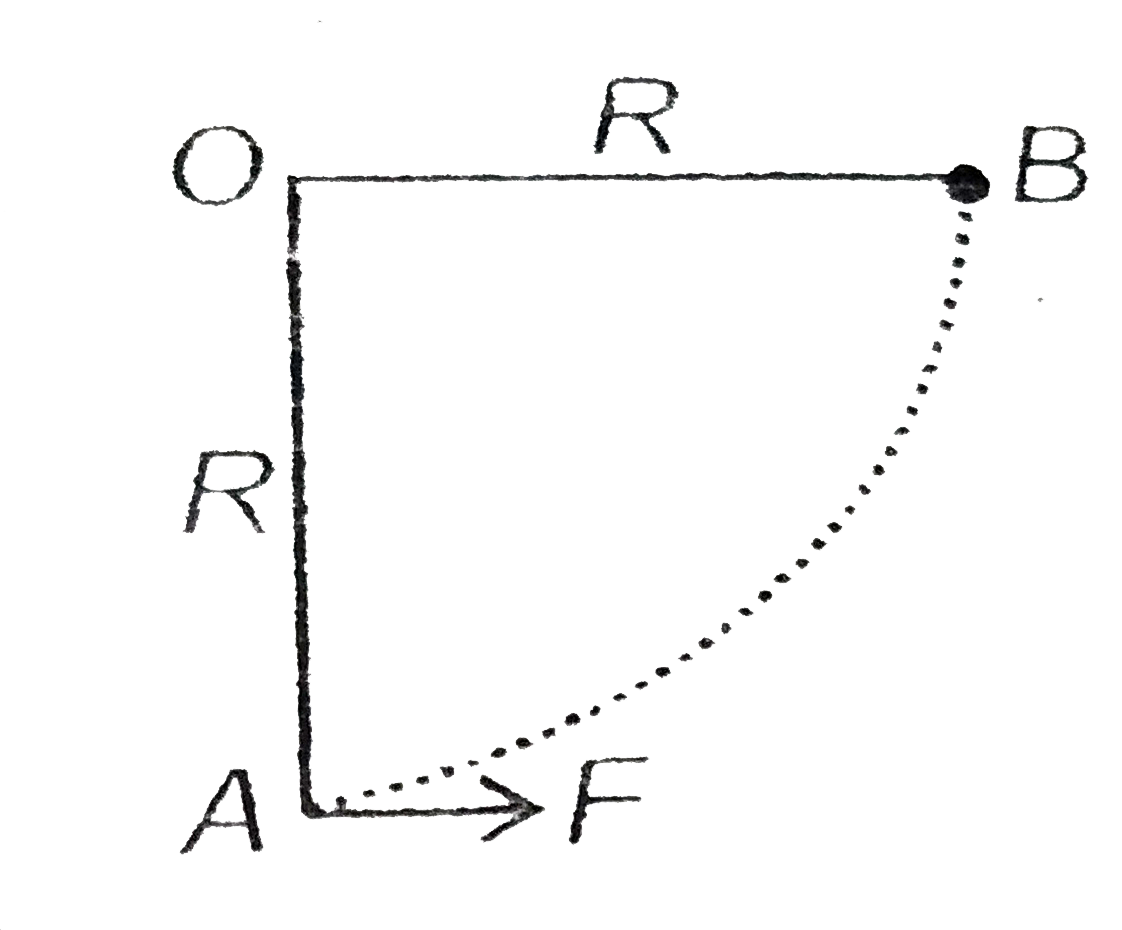The kinetic energy acquired by a mass m travelling a certain distance d, starting from rest, under the action of a force F such that the force F is directly proportional to t is
directly proportional to t2
independent of t
directly proportional to t4
directly proportional to t
f=kt
m∫v0dv=k∫t0tdt
mv=kt2
v=kmt2
K.E.=12mv2=12mk2m2t4=(k22m)t4
KE∝t4
Topper's Solved these Questions
Similar Questions
The velocity acquired by a mass m in travelling a certain distance d starting from rest under the action of a constant force is directly proportional to :-
View SolutionThe KE acquired by a mass m in travelling a certain distance s, starting from rest, under the action of a constant force is directly proportional to :
View Solution
Knowledge Check
- Question 1 - Select One
The kinetic energy acquired by a mass m after travelling a fixed distance from rest under the action of constant force is
Adirectly proportional √mBinversely proportional to √mCdirectly proportional to m.Dindependent of m. - Question 2 - Select One
A particle of mass 0.1 kg is subjected to a force which is directly proportional to the distance x. the work done by the force is directly proportional to
AxBx3Cx3/2Dx2
The K.E. acquired by a mass m in travelling a certain distance d, starting from rest, under the action of a constant force is directly propotional to
View SolutionA block of mass m is taken from A to B under the action of a constant force F. Work done by this force is
 View Solution
View SolutionA particle of mass m moves from rest under the action of a constant force F which acts for two seconds. The maximum power attained is
View SolutionA constant force acts on a mass m at rest. Velocity acquired in travelling a fixed distance is directly proportional to :
View SolutionA particle of mass M moves with constant speed along a circular path of radius r under the action of a force F. Its speed is
View SolutionAn object of mass m, initially at rest under the action of a constant force F attains a velocity v in time t. Then, the average power supplied to mass is
View Solution

